As developers review new construction projects, a recurring decision must be made in the early stages of development: Should the project be design-bid-build or design-build? These are the two primary delivery methods utilized in the industry, both of which have benefits and weaknesses. We’ve taken the time to review what differentiates the two so you can understand them better.
This process is selected most commonly when pricing is the major driving force behind the decision, as the low bid usually wins. The delivery method starts by taking a project to a design team (which is comprised of consultants, architects and engineers) to create a set of documents that can be used to solicit bids from construction companies. Once design documents are completed the project is put out to bid in a process that is usually managed by the Architect or an owner representative. The objective of the bid process is to solicit the lowest price from a construction company for the specified work. Once the lowest bidder is identified, the owner will then enter into a contract to build what was designed. You can learn more about this process here on our website.
The Design-Build process utilizes one construction company to oversee all steps of the project from design to completion. This delivery method creates a turn-key solution for developers, as it can be customized to meet the needs of the developer. Developers can tailor what their Design-Builder will manager in the process from property acquisition and municipal approvals, to all design documents, submittals and construction. This framework provides a lot more freedom to developers who may be working on several projects at once. You can learn more about this process here on our website.
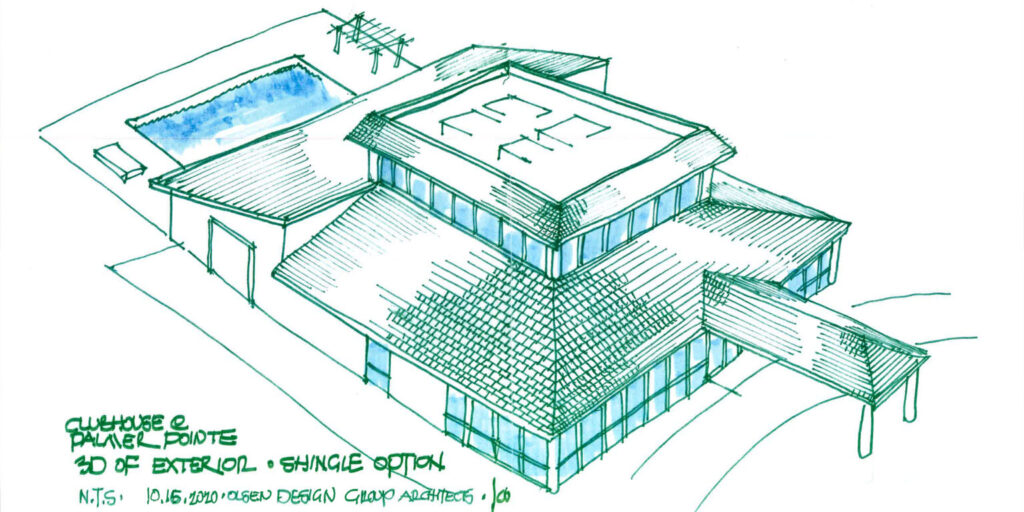
So which is the best delivery method?
Both Design-Build and Design-Bid come with their fair share of pros and cons. Next, we’ll review those pluses and minuses to see if there’s a clear winner.
Benefits of Design-Bid:
–Cost: Design-Bid is most often used when your project has a fixed budget. This process elicits the most competitive proposals from competent builders.
–Control: In this delivery method owners have much clearer control over pricing, design, and approvals.
–Transparent: Design-Bid captures a client’s upfront wants and needs.
If you ask D&B Construction’s Project Executive, Jim Aylmer, he’ll tell you that he prefers Design-Bid-Build for larger projects because it “creates an accurate pricing exercise as it relates to a client’s budget, it allows time for value engineering and more cost-effective budgeting, and the end product is mapped out.” Whenever he has been involved with Design-Build projects they have been for smaller-scale projects, as these designs tend to be more simplified and there is more involvement from the owner throughout the build process.
Negatives of Design-Bid:
–Disputes and Delays: When you do a competitive bid process you will only get pricing on exactly what is on your drawings. If your design team misses anything on the construction documents that were used for the bid, you will often end up with finger-pointing in the field and costly change orders.
–Time: It can take a long time to organize a design team, create documents, put the project out to bid, go through rebidding and post-bid value-engineering, identify a contractor, and enter into agreements all before you get a shovel in the ground.
–Disjointed: Due to the number of disconnected parties in a Design-Bid construction project, you may encounter communication issues as the owner, designers and builder, along with their trades, all act independently, worried about covering their own portions of the project instead of the entirety.
Drawbacks of Design-Build:
–Non-competitive: The non-competitive nature of this process doesn’t result in a lowest cost proposal from multiple bids.
–Trust: Due to the amount of control a developer is giving up to the Design-Builder, you need to have a lot of trust in the team you’ve selected.
Benefits of Design-Build:
–Efficiency: Consolidating the entire process in one entity allows the most coordination throughout the entire construction process from design to completion. The simplification of design-build allows developers to focus on multiple projects at once.
–Customization: This delivery method is great for projects that are unique in finishes and structures. Linking the construction and design teams from the beginning ensure constructability with real-time cost adjustments. This allows owners to effectively manage budgets before breaking ground.
–Flexibility: Both to the budget and final end product
–Value-Engineering: Throughout the process, developers can monitor and adjust various components of the design for substantial equivalents that can save time and money during construction.
–Enhanced Communication: Having one central decision entity (the design-builder) allows for free flow of information from the start of a project. All trades, designers, and owners are communicating through the contractor, which ensures unified messaging and vision through one cohesive team.
Tim Cox, President and CEO of Meister-Cox Architects, emphasizes how he “really likes how it is a team effort when doing design-build projects,” explaining that in these types of projects he works with D&B, the client, and at some point will bring in the subcontractors if they are going to do the design and the drawings for the mechanicals, electrical, and plumbing systems. “It’s a give and take and just part of the value-engineering process really, he explains.”
–Timing: Utilizing a design-build approach provides a project that is well scheduled and designed before the start of the construction. Having an early jump on a project’s components allows the builder to coordinate the trades further in advance. This allows the various stages of active construction to flow seamlessly.
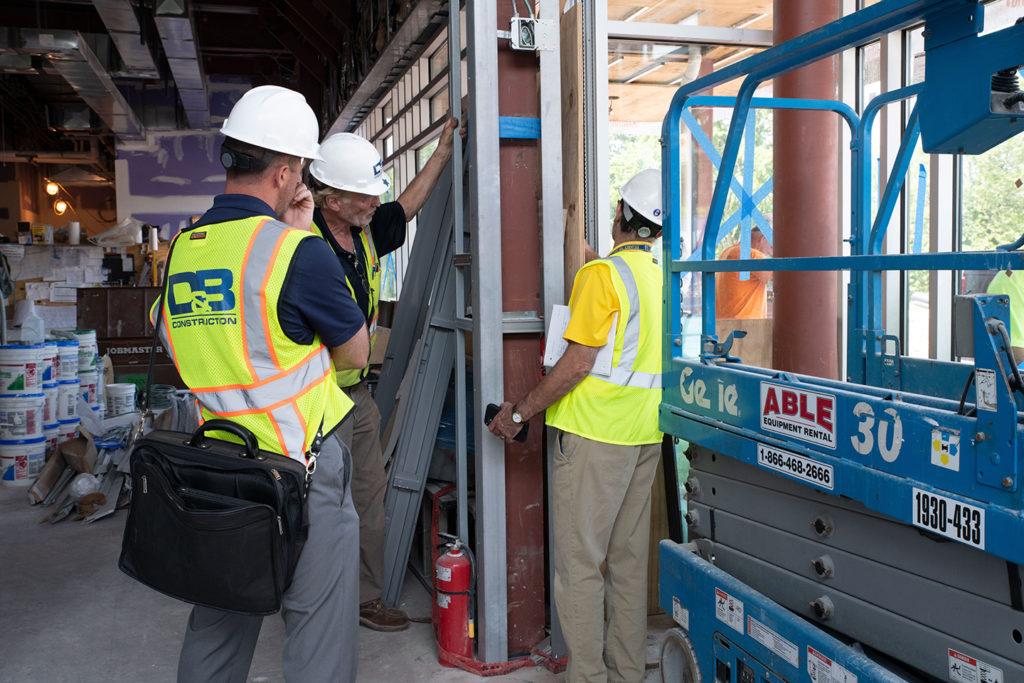
Can We Declare An Ultimate Winner?!
In short, both construction delivery methods have their significance. As it is with any construction project, what you end up going with ultimately depends on your final usage. Timing and cost are generally the prevailing guidelines for making this decision. Ultimately, when choosing between Design-Build or Design-Bid a careful analysis of your needs and the points mentioned above should be considered in order to determine the best option for your project.
Jim, our Project Executive, typically would recommend Design-Bid projects for “any and all out of the ground projects.” The reason being? “The client and design team already have the plan in place. We as the construction team then need to execute based off of these design documents,” he explains. Kennett Pointe, Butler Square Apartments, Veterinary Emergency Group, Griswold Home Care, and Children’s Hospital of Philadelphia’s Souderton ambulatory building are recent examples of Design-Bid jobs that he has played a vital role in.
“Typically, major developers will not likely be performing a project based off of Design-Build. If I had to choose, I would 99% steer a client in the direction of Design-Bid-Build,” he concludes.
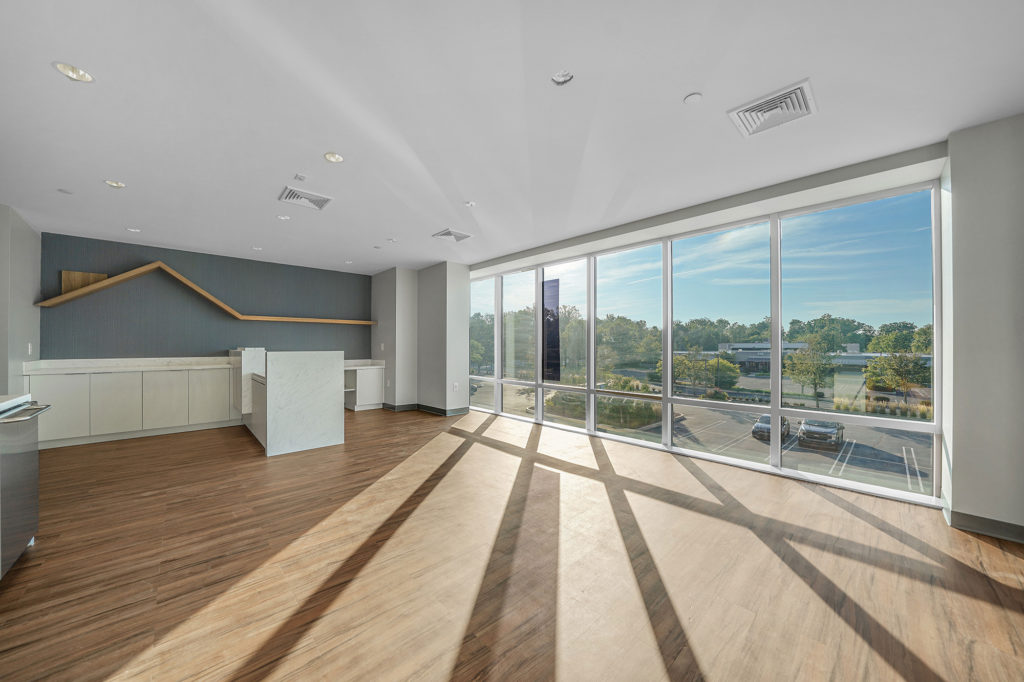
Food For Thought:
-If you had to choose one over the other, which would you lean towards and why?
-Are there any pros / cons you would add to the list for either construction method?
We’d love to hear your thoughts on the above questions! Feel free to provide your feedback in the comment section below.
If you’d like to discuss what is right for your next project, we’d be glad to talk it through with you in more detail. Reach out to us today to learn more.
While it may be a timeless running joke that those working in construction are incapable of passing by a location they played a role in constructing without saying “I helped build that,” it also is a testament to all the heart, dedication and grit that goes into the industry.
If you are local to the Wyomissing area, you’ve likely heard – and are excited for – the new lifestyle retail center and outdoor promenade that will be opening this Spring. Leading the build is D&B Construction, a locally based full-service commercial construction company that has been trusted as the General Contractor by Project Developer, Brickstone Realty.
The project team behind the build is the definition of construction that cares. It is composed of a talented design team, D&B’s pre-construction team, D&B’s field team of Superintendents and Project Managers, and nearly 35 qualified companies that D&B trusts as an extension of their team as their Trade Partners. Collectively, they have been working tirelessly to juggle strained lead times, supply issues and more to keep the project running smoothly.
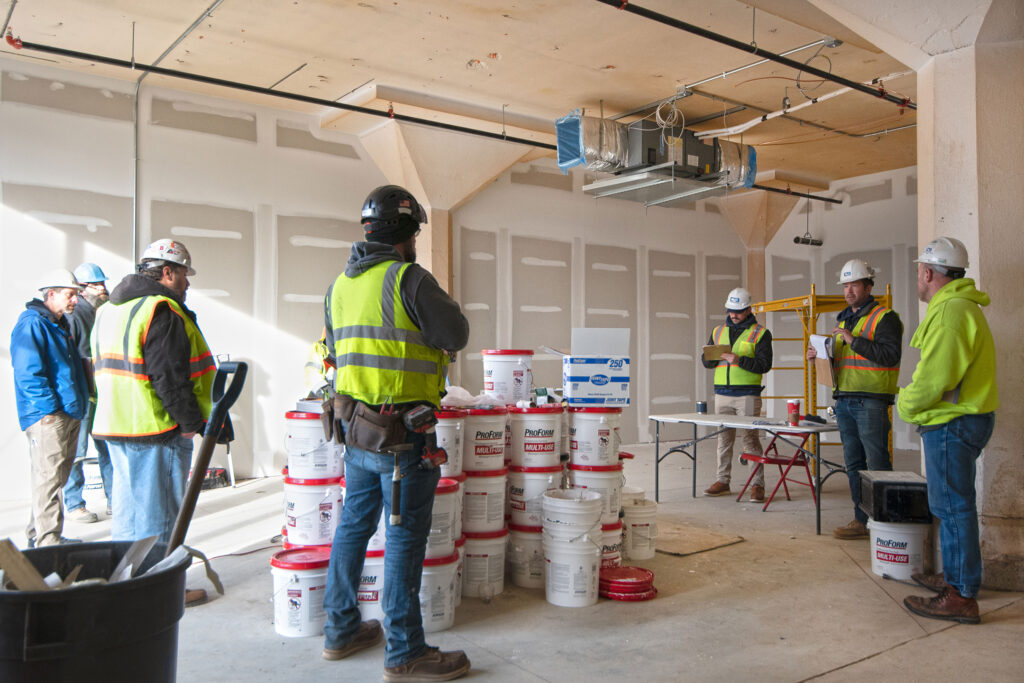
Team D&B started working with the original plans from 2008/2009, which were “cost prohibitive for the project to work from an economics standpoint,” according to Mark Keever, D&B’s Vice President of Pre-Construction. Mark and his department got to work value engineering the project and running through different design recommendations and ideas courtesy of Project Architect, Tim Cox, President and CEO of Meister-Cox Architects based in Wyomissing. These efforts allowed the project to move forward in a post-COVID world by making it more affordable to construct without losing character and style so the project could be successful for all involved.
“Anytime you are working with a building of that age and size, there will always be challenges and unforeseen conditions. D&B’s Pre-Construction Department, along with the Developers, Design Team and Trade Partners did a deep dive into the required due diligence for a project of this magnitude. Due to the upfront legwork, we were able to head off any major hurdles or obstacles before they arose,” reflects Mark.
Many of the individuals involved in this project have a motivation fueled not only by their dedication to the craft, but their personal ties to the community and love for the area. For D&B Team Member Josh Mazzo, who is also the Project Manager on the job, this rings true. “I grew up in the area, moved away, and came back. There’s something unique about Wyomissing, and to be able to have the opportunity to make physical imprints on the area means a lot. I brag about it to my family and friends. The excitement in my voice will tell you all you need to know,” he explains.
Such is also the case for Project Architect, Tim Cox. As a Wilson High School grad who still lives in the area, it has been “an honor to be part of a project that revitalizes the area, and it is truly humbling to be able to make a small contribution and an indelible mark in the history of Wyomissing.” Similar to how native Berks Countians will always remember the legacy of the Vanity Fair complex, Cox hopes that this transformation of the former Brickstone’s and Viva Bistro and Lounge will also “cement its place into the hearts and history of generations to come.”
John Connors, Principal / Master Developer for Brickstone, is confident that the 12 tenants moving into this space will do just that and become “Wyomissing’s living room.” He explains how the intention was always for this to be a first-class best in show lifestyle retail center. “That’s been our plan all along, and that’s what we’re getting. A nice mix of high quality national, regional, and local folks with tenants like Sola Salons and Vintner’s Table by Folino Estate Winery,” states Connors.
To learn more about spaces still available for lease, contact Brickstone Realty directly or reach out through their retail broker, MSC Realty.
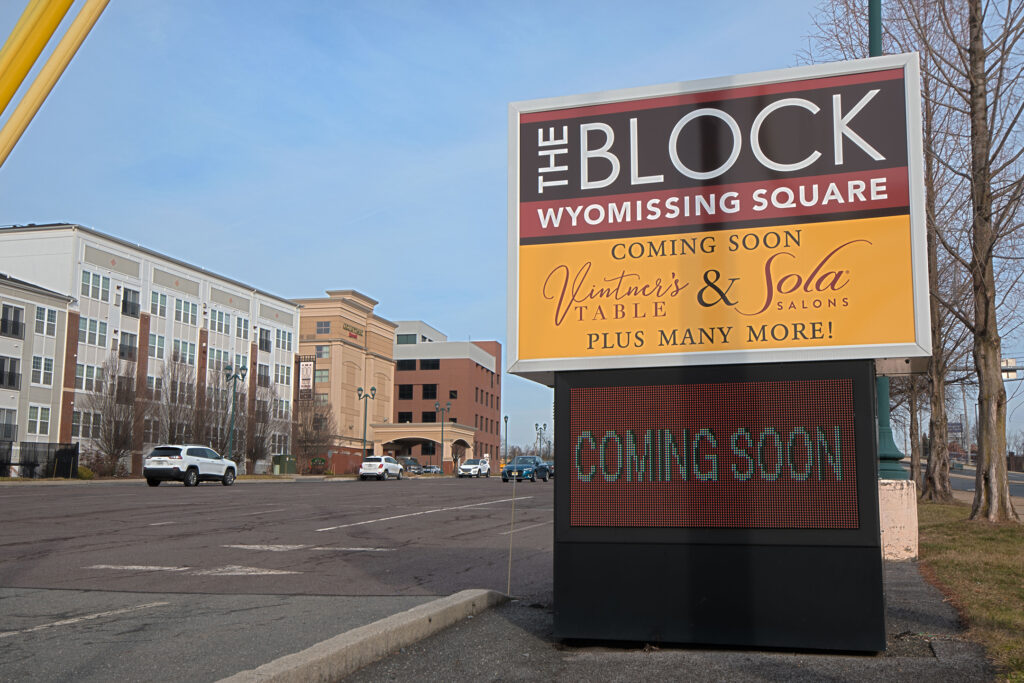
From rendering to reality: All images below on the left are renderings courtesy of Tim Cox of Meister-Cox Architects. All images on the right were taken on-site in mid-February showing the progression. You can view more photos throughout construction here on our website.
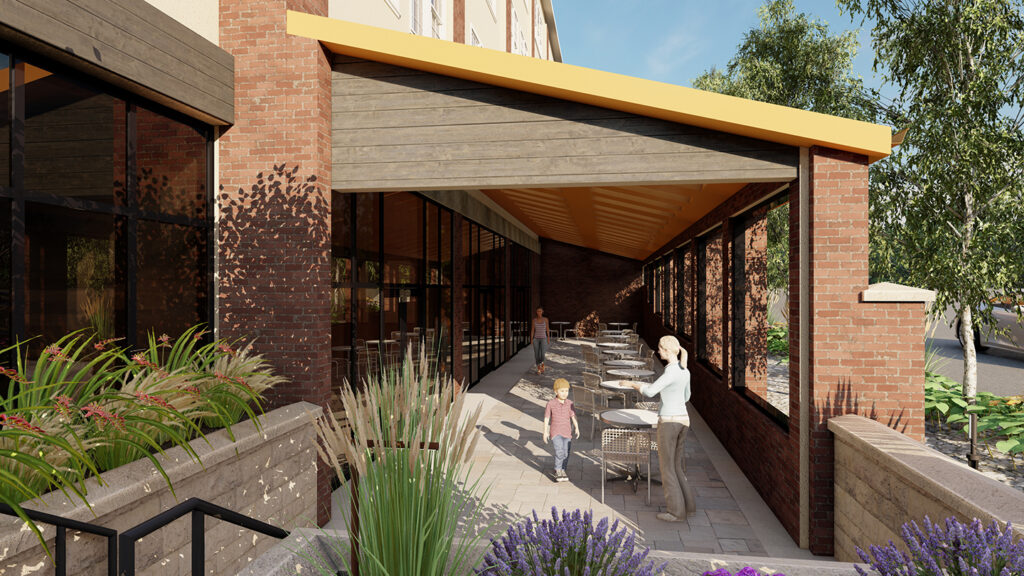
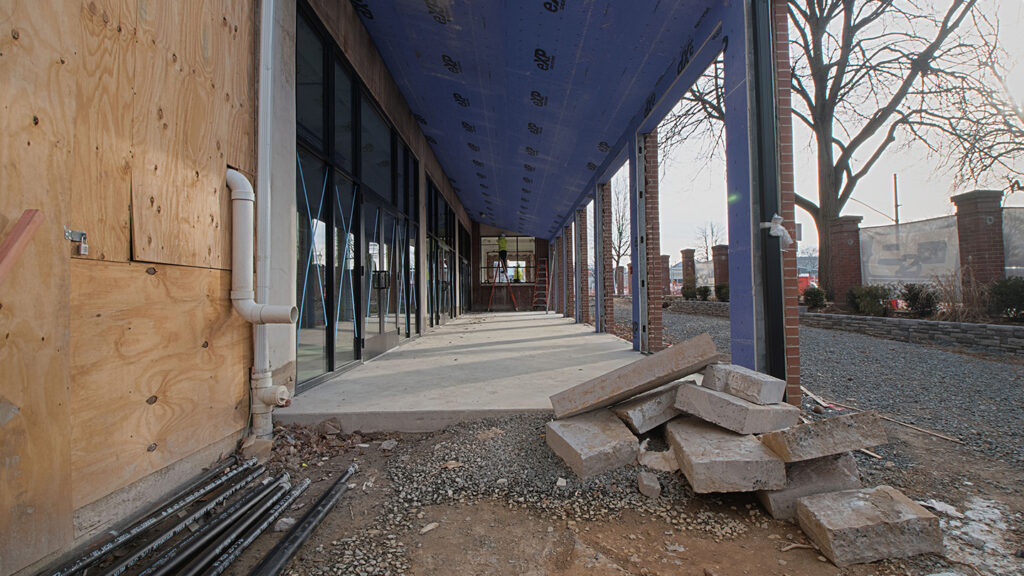
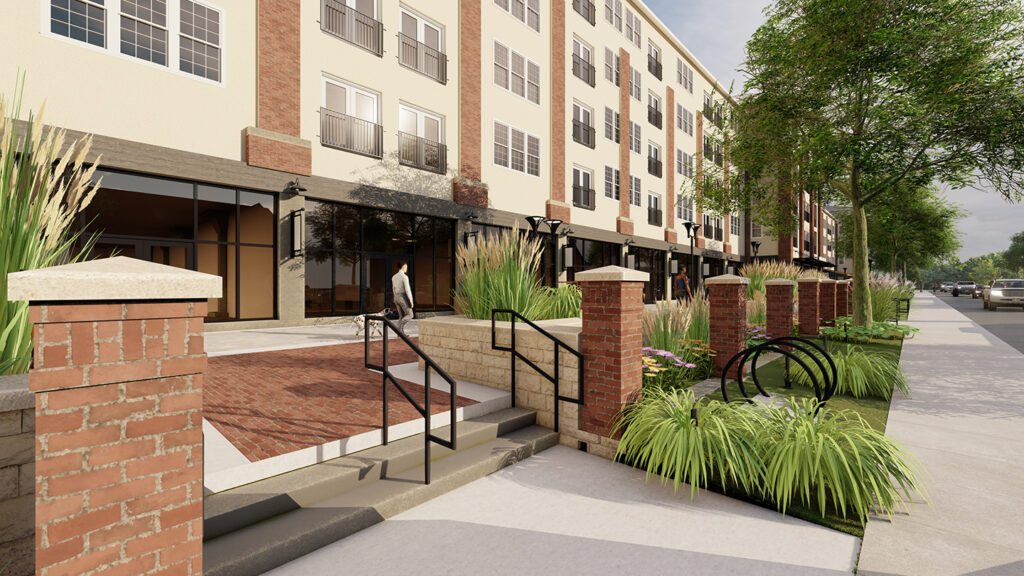
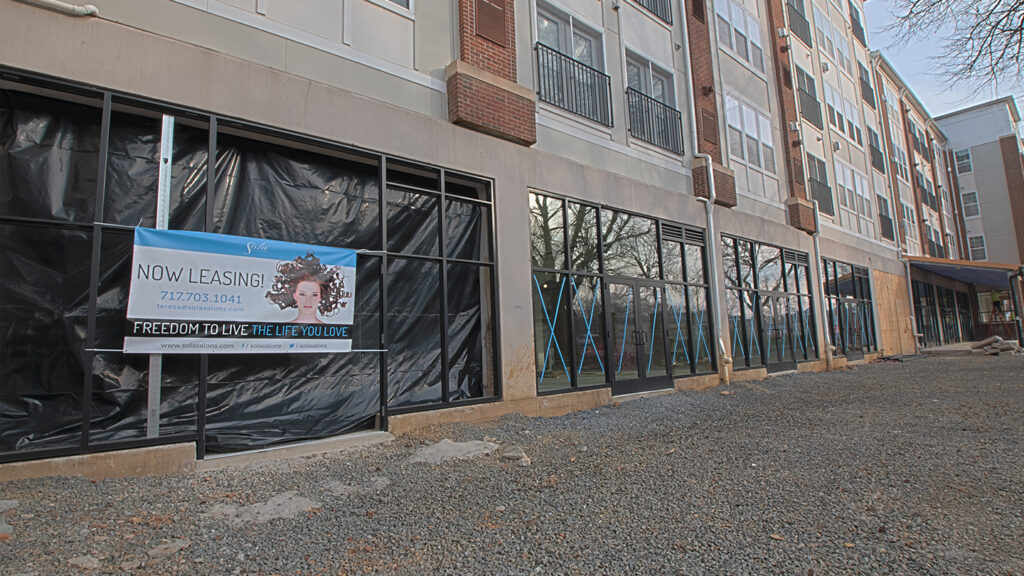
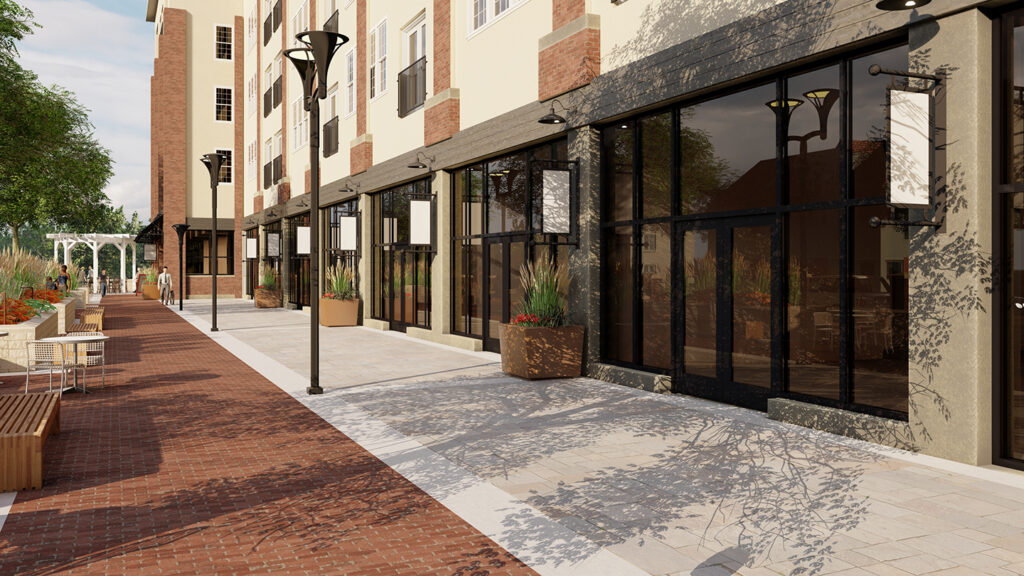
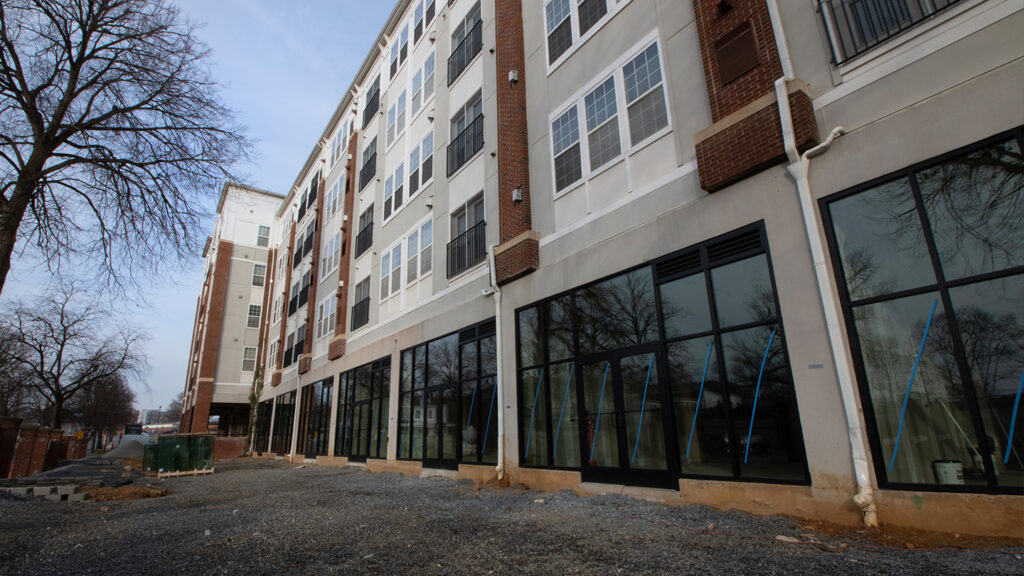
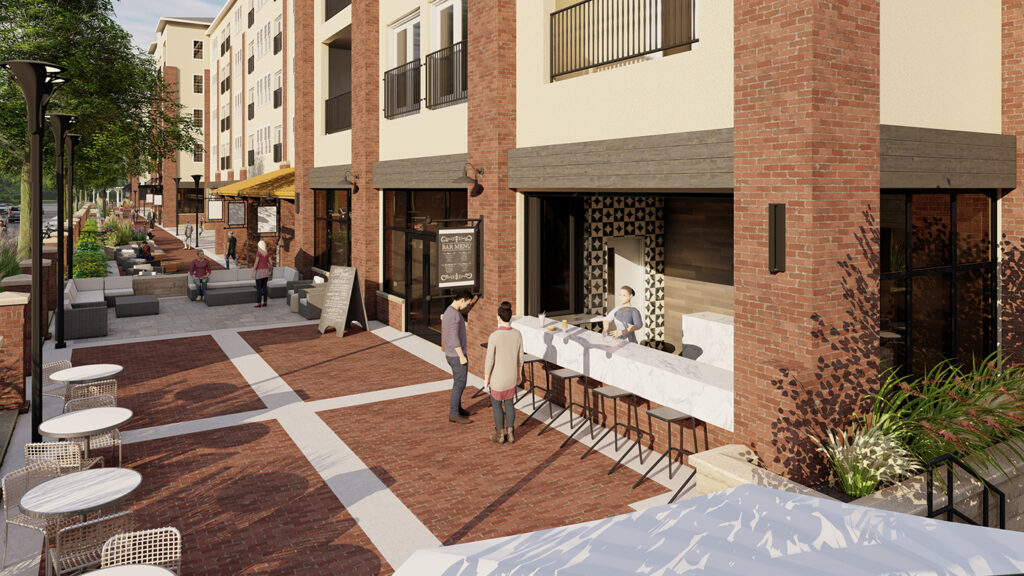

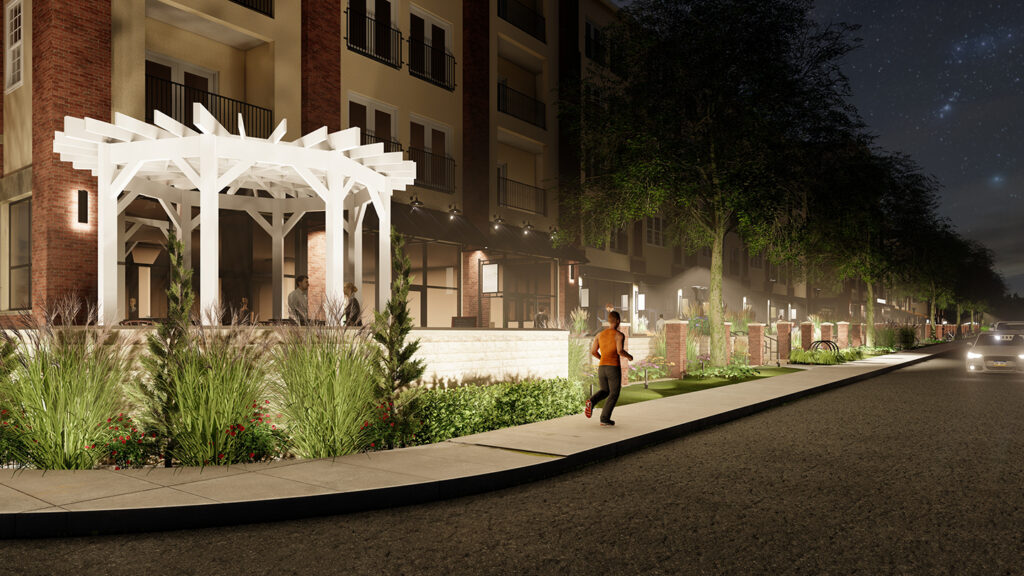
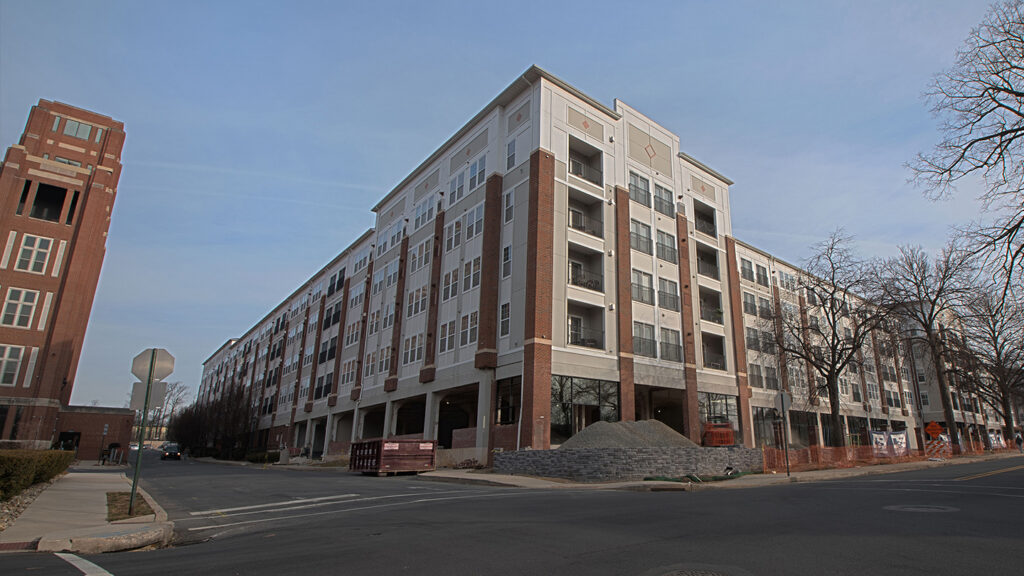
Choosing Wyomissing:
The developer of this project, Brickstone Realty, has been in the large-scale rehabilitation business for many years in center-city Philadelphia. According to John Connors, when they saw this property – which was not only a very large warehouse building, but also 13 acres in the heart of Wyomissing’s Borough – it looked like a terrific opportunity for them to do a large multi-use project. They wanted to bring high quality retail right into the neighborhood so locals no longer have to get into their car to seek such services out.
“We think it’s going to be an outstanding market, and the response we’re getting now from tenants is really extraordinary. We could have taken shortcuts and filled this place up with Class B tenants, but we basically promised the Borough of Wyomissing something great. We think that this has been an extraordinary development and probably the catalyst for all the other development that’s followed. It’s been successful in every way: 248 apartments upstairs, 135 hotel rooms, another 100 apartments immediately contiguous, The Knitting Mills right next door. We expect this retail to be equally, and maybe even more so, successful. We think the new center of gravity for Wyomissing Borough is going to switch to right here, as we’ve tried to capture the best of everything there is to offer and deliver it right here,” explains Connors.
The Course of Construction:
In the late Summer of 2022, D&B Construction began demolition on this project. The beginning stages involved a lot of lead abatement work and demolition, including excavation and exporting approximately 1.5′ of existing material throughout the 30,000 square foot building footprint in order to lower the subgrade to achieve the desired finished floor elevation. It involved coordinating the removal of approximately 250 tri-axle loads of dirt from the interior of the building.
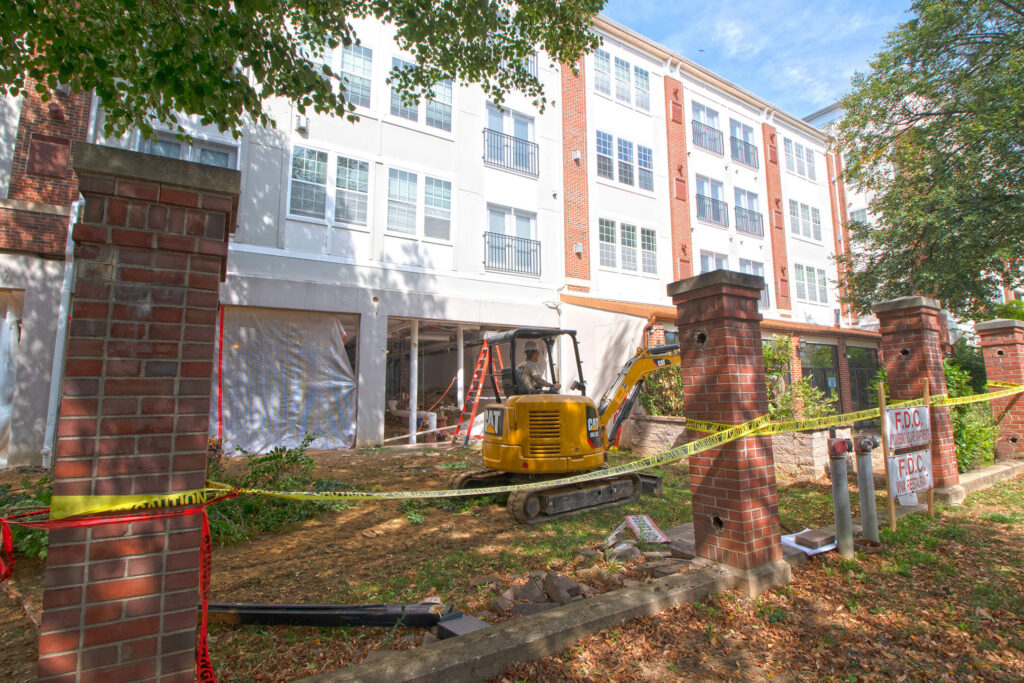
The construction schedule of this project was an aggressive one, but Team D&B credits each and every one of their Trade Partners for going above and beyond to keep the schedule and maintain the level of product D&B expects. Josh echoes these thoughts, explaining how the D&B team has been “working diligently with our Trade Partners to find ‘work arounds’ until we are able to land the equipment needed, as lead times are a huge issue in today’s world.”
Although it is the first time that Brickstone has worked with D&B Construction, John Connors credits Team D&B for having a good working relationship with the developer and “getting what we wanted to accomplish early on.” Connors explains how D&B and Brickstone have been working hand-in-hand for over 20 months now thanks to “a couple of pandemic-induced fits and starts.”
While no developer enjoys a value-engineering exercise, John Connors believes they were extremists coming out of the pandemic in every respect, so they had to deal with the realities of what the market place was. “I think all in all we worked together to get the best possible result given the conditions of the market place right now. We’re happy with our design. We’re happy with where it’s going. We’re looking forward to opening this place up in the Spring and making a difference in Wyomissing Borough and Berks County,” concludes Connors.
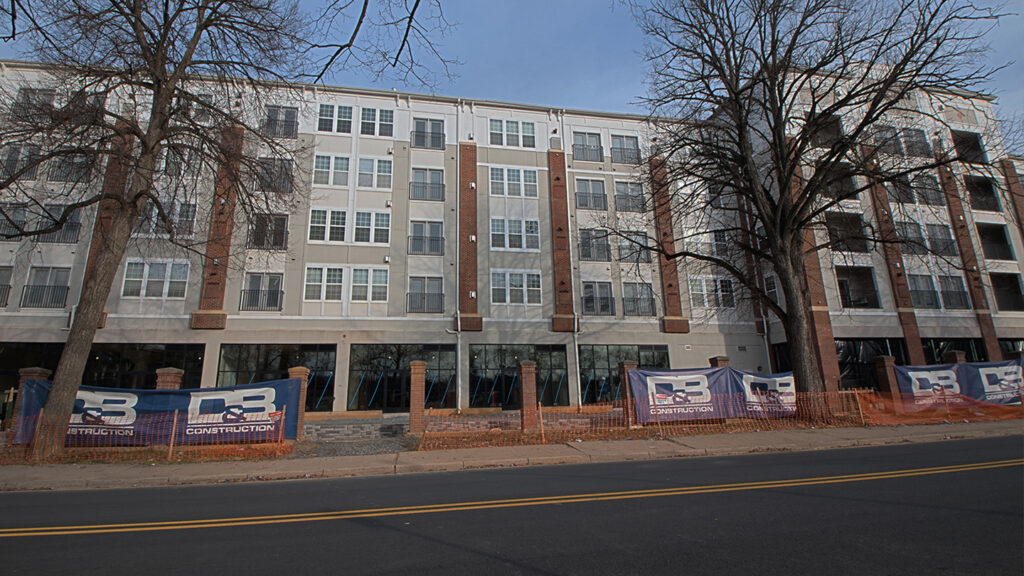
If you drive down Hill Avenue in Wyomissing today, you’ll see storefronts are nearly all installed behind the recognizable navy blue and white fence screening that is D&B’s. This is a pivotal turning point for the project because not only does the installation of all storefronts look nice, but it also allows heat to be kept in the suites so various interior work can be completed. While the exterior is being prepped for more earthwork changes with the promenade and retaining wall, drywall is being finished inside each future tenant’s space so painting can begin and permanent power and heat can be delivered to each unit.
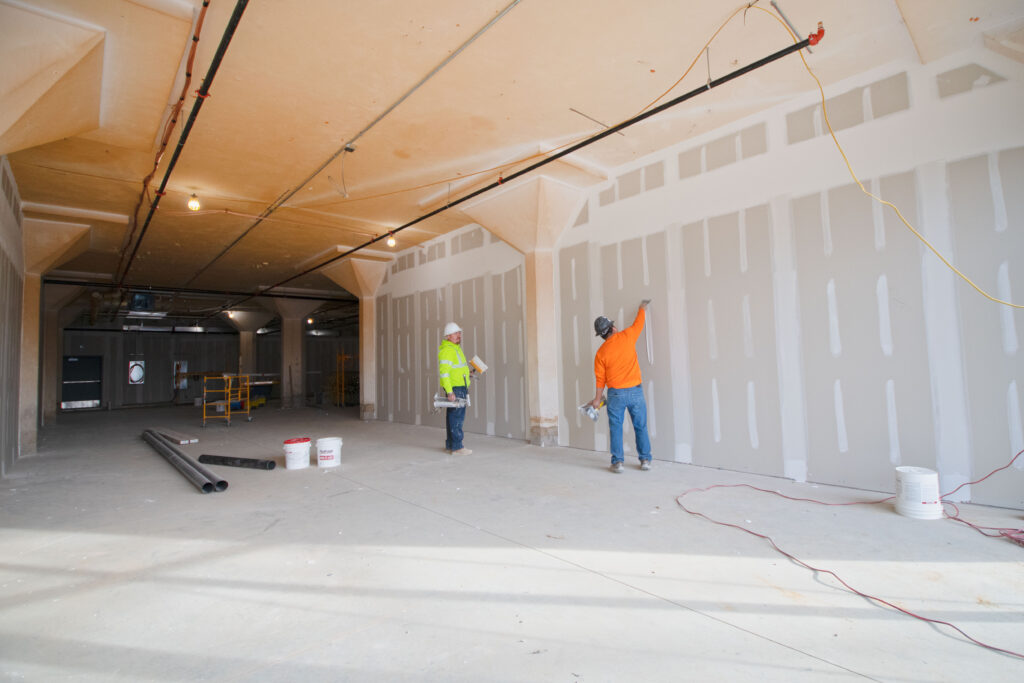
“We have a good team working on this project – From the Trade Partners, to the owner, to the D&B Project Team. It’s been a team effort the whole way through, and you will want to stick around to see the final product this team can produce,” concludes Josh.
That’s the difference of a construction company that cares.
Stay tuned, Wyomissing. Stay tuned.